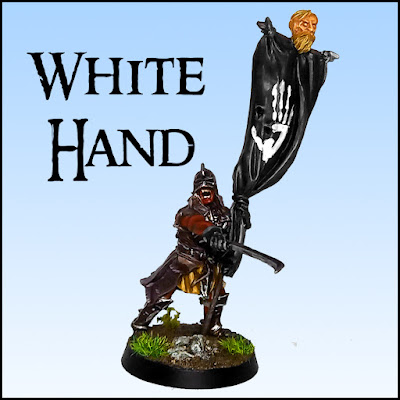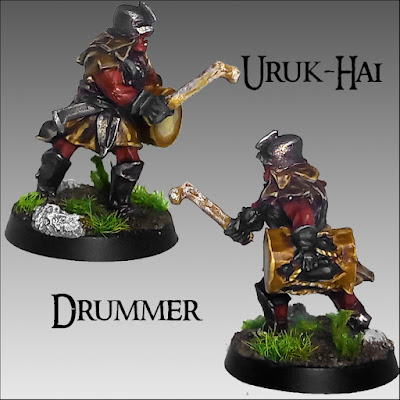88th post - Varnishing the Models!
Hey friends!
Almost a year has passed since I finished the paint work on my Gondorian Banner Bearer Knight, and it has been waiting on the "to varnish shelve" since then. So, this week I have decided to finally varnish him and publish the whole process in here.
Varnishing the miniatures is one of those subjects that usually gets a lot of debate by the hobbying community (paired with the eternal Citadel vs Vallejo discussion) and, in fact, all the pro's and con's should be thought over before you start.
So, let us see:
- Pro's
- It protects/reinforces the model's structure, hardening it and preventing it to break easily;
- Can be used to provide an extra shining look on metallics, such as swords and armors;
- Prevents your paint work from chipping or scratching over time.
- Con's
- It might take hold on what your miniature looks like in the end. So, caution is needed, though you'll never have full control of the varnish's effect over the model;
- It'll ruin the miniature when applied over still wet surfaces;
- It is somehow expensive, specially if you decide to give your model multiple coats.
Conclusion: If you play on a regular basis, and your models are painted on a tabletop standard, than varnishing the miniatures will really help you. You'll benefit a lot. On the other hand, if you just paint for pleasure (like me) and you're very happy with the overall look of your minis, than you should consider all the pro's and con's of the process.
By my part, I usually varnish my minis, since I find it gives a way good protection, and I really enjoy the glossy finish it provides to the metallic colours.
* * *
- Tipes of Varnish:
- Gloss Varnish: I find it is the one that gives the strongest coat of all the varnishes that I have used, and so I tend to use it first in all the parts of the model (100%, excluding the base). When it dries, the model will be sun glossy, so it's recommended that you have a matt varnish so you can interpose that look.
- Matt Varnish: This one, I use to ungloss the parts of the miniature that I don't want glossy. The final result tends to be satin, so I usually make it with a couple of coats. It is also an excellent alternative for those of you who don't intend to lose any detail on your painted model. You just need to use it alone (instead of using it to ungloss the previous fase).
- Satin Varnish: There is also the satin finish varnish, who I've never used, therefore i can't express any opinion about. The result will probably be similar to the Gloss+Matt varnish method I use.
* * *
My Method
I've tried to capture the different results for all the fases of the varnishing process, but it is mainly observable in the most highlighted spots (particularly in the horse), being more discernible at naked eye. I guess we all know the struggle of passing to photos what our eyes see ...
It consists in two fases:
I've tried to capture the different results for all the fases of the varnishing process, but it is mainly observable in the most highlighted spots (particularly in the horse), being more discernible at naked eye. I guess we all know the struggle of passing to photos what our eyes see ...
It consists in two fases:
- Gloss varnishing
- Matt varnishing
 |
| The miniature still unvarnished. |
 |
| The main difference might be spotted on the horse's glow but, with a closer look on the knight's amor and banner, the glowing can be discernible as well. |
Then, with the coat of Matt Varnish, the satin effect can be easily spotted, (again) mainly in the horse.
And that's all!
I'll be posting some more things soon, since some ideas have been running thru my head :)
I hope this will be useful to someone!
Happy hobbying!!!!!









Thank You for this review Tiago! very helpful!
ReplyDeleteI'm glad you found it useful Michał :)
DeleteOra viva Tiago! Belo post, que trabalheira....!!!! :D Abraço e boa semana!
ReplyDeleteÉ verdade Rogério :)
DeleteMuito obrigado :D Abraço